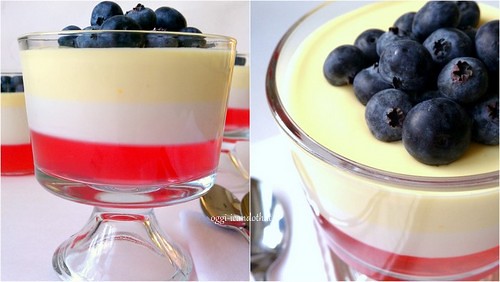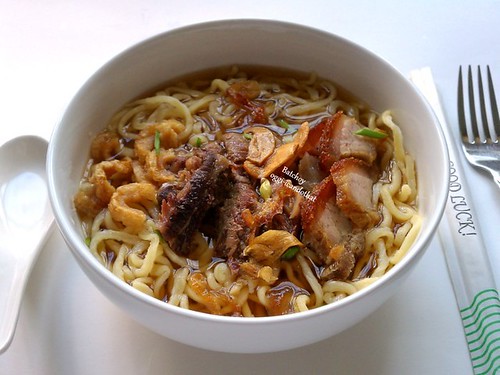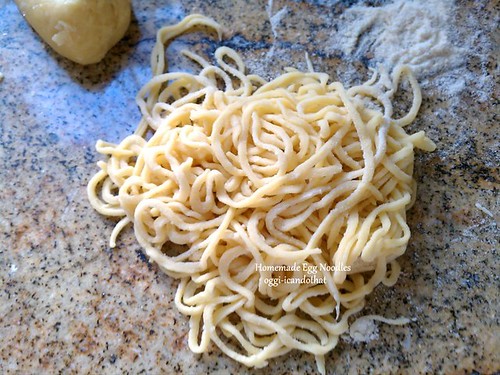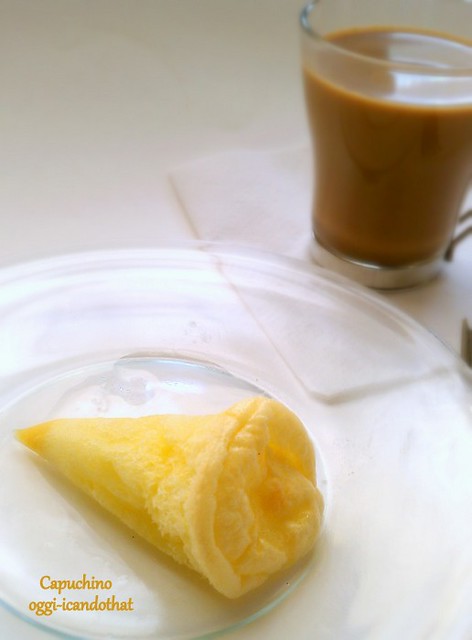
RED WHITE YELLOW BLUE PLATE SPECIAL
longaniza jamonado, tomatoes
sunny side-up egg, fried rice
blue tater tots
The Philippine flag is Kulinarya Cooking Club theme for the combined months of August and September 2011 co-hosted by yours truly, Ray, Boyet, and Day to celebrate Philippines National Heroes Day, plus Ninoy Aquino Day.
Blue Plate Special means a low-priced meal with meat and three vegetables all in one plate offered by some restaurants here in the US; it doesn't have any blue food although sometimes served in a blue-colored plate. Well, my plate special is quad-colored and the food in it have the actual colors of red, white, yellow, and blue, all in one blue-rimmed plate; it's priceless! My plate is an ensemble of my favorite Filipino breakfast: longaniza, tomatoes, fried egg/s, fried rice, and fried potatoes.
The challenge was to prepare a dish with the four colors of the Philippine flag all in one plate or dish. They may be a garnish or the plate the dish is served in but we were not allowed to use store-bought chemical food dye to color the ingredients if dyeing is necessary. Finding naturally colored blue food was tough but the first thing that came to mind was the blue potato pancake I made a few years ago. These sweetish waxy potatoes have blue/purple color that deepens into almost navy blue when cooked and have completely cooled to room temperature. I added some salt and sauteed chopped onion into the partially cooked grated potatoes, formed the mixture into small lumps, and fried them in light olive oil and butter until dark brown and crusty.
Longaniza Jamonado
The challenge was to prepare a dish with the four colors of the Philippine flag all in one plate or dish. They may be a garnish or the plate the dish is served in but we were not allowed to use store-bought chemical food dye to color the ingredients if dyeing is necessary. Finding naturally colored blue food was tough but the first thing that came to mind was the blue potato pancake I made a few years ago. These sweetish waxy potatoes have blue/purple color that deepens into almost navy blue when cooked and have completely cooled to room temperature. I added some salt and sauteed chopped onion into the partially cooked grated potatoes, formed the mixture into small lumps, and fried them in light olive oil and butter until dark brown and crusty.
Longaniza Jamonado
2½ pounds pork, cut into 1-inch cubes
¼ pound pork fat, cut into ¼-inch cubes
¼ cup fine raw cane sugar
¼ cup white cane sugar
¼ cup white cane sugar
½ teaspoon pink salt
1½ tablespoons kosher or sea salt (not table salt)
1/8 teaspoon ground cloves
hog casing, rinsed and soaked in warm water
- Place the pork and pork fat separately in the freezer for 30 minutes or until icy. Coarsely grind the pork. In a small bowl, whisk together sugars, salt, pink salt, and cloves. In a large bowl, mix by hand the pork and fat until fat is evenly distributed. Mix in by hand the sugar mixture. Fill casing or form into longaniza shapes/patties. Refrigerate for 24 hours before cooking.
I also made a layered dessert since this is a 2-month challenge. The bottom layer is plain sweet red agar (sorry but the ready to cook red gulaman bar surely was artificially dyed) with a few drops of vanilla extract. The white and yellow layers are yogurt panna cotta, the white is flavored with vanilla extract and the yellow has calamansi juice and grated zest. For the calamansi layer, I soaked a few strands of Spanish saffron in hot cream. The yellow color is very pale because I didn't want to flavor the dessert too much with saffron. It has a definite calamansi flavor and I love the combined tartness of calamansi juice, yogurt, and blueberries cutting the sweetness of the dessert.
Before we agreed on the flag colors, we initially chose yellow, as in Ninoy Aquino yellow. On the same day we all voted yes on the yellow color, part of the dinner I was preparing was vegetables, salted duck egg, and green mango salad and I noticed the components were mostly yellow including the calamansi dipping sauce. I plated them and took pictures. When we changed the color theme a few hours later to include the flag, I didn't think the salad will do but realized all the 4 colors were also present. The blue is the piece of slate that came with the dish and dipping bowls set. Anyway, this sunshine on a plate is definitely Ninoy Aquino's.
SUNSHINE ON A PLATE
Filipino salad of semi-ripe mangoes, roasted eggplants, tomatoes,
steamed sweet potato tops, salted duck eggs
dipping sauce of sauteed fermented micro shrimps,
calamansi juice with fish sauce, sugar, and sliced hot red chile
calamansi juice and sea salt
Filipino salad of semi-ripe mangoes, roasted eggplants, tomatoes,
steamed sweet potato tops, salted duck eggs
dipping sauce of sauteed fermented micro shrimps,
calamansi juice with fish sauce, sugar, and sliced hot red chile
calamansi juice and sea salt
*********************************************************************************
Kulinarya was started by a group of Filipino foodies living in Sydney, who are passionate about the Filipino culture and its colourful cuisine.
Each month we will showcase a new dish along with their family recipes. By sharing these recipes, we hope you find the same passion and love for the Filipino Food as we do.
*********************************************************************************
See more Red White Yellow Blue creations here.







